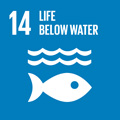- Docente: Daniele Fabbri
- Credits: 6
- SSD: CHIM/01
- Language: Italian
- Moduli: Daniele Fabbri (Modulo 1) Cristian Torri (Modulo 2)
- Teaching Mode: Traditional lectures (Modulo 1) Traditional lectures (Modulo 2)
- Campus: Ravenna
- Corso: Second cycle degree programme (LM) in Science and Technologies for Environmental Sustainability (cod. 6055)
-
from Mar 17, 2025 to May 08, 2025
-
from Apr 10, 2025 to May 29, 2025
Learning outcomes
At the end of the course, students have a knowledge of the chemical determinations adopted in the evaluation of environmental quality. They should be able to understand and apply methodologies in chemical environmental monitoring of pollutants in different compartments, criteria to assess the reliability of chemical data and tools for their interpretation in relation to the composition of environmental matrices (air, water, soil/sediment), to the sources of contamination and their effect on the environment.
Course contents
UNIT 1.
- Chemical substances, molecular identity, natural and artificial, additives, byproducts.
- Polycyclic aromatic hydrocarbons.
- Chemical monitoring, evaluation of analytical results, method validation, figures of merit.
- Chemical characteristics of contaminants and matrices, vapour pressure, water solubility, distribution coefficients.
- Dissipation, degradation, photodegradation and ozone formation.
- Greenhouse gas and climate change.
UNIT 2.
- Evaluation of environmental quality: pollution or contamination; environmental quality index and indicators; environmental quality standards; emission standards.
- Combustion pollutants: NOx, SOx, VOC, PMx
- Non-persistent pollutants: COD and BOD, organic load, oxygen balance of surface water bodies, pollution from water discharges, anoxia and dead-zones, hydrocarbons and petroleum.
- Heavy Metals Pollution: Copper, Zinc, Lead, Cadmium, Mercury; sources of pollution, speciation and accumulation in the food chain; the case of Minamata Bay.
- Persistent organic pollutants (POPs): organochlorine insecticides (DDT, HCH), polychlorinated biphenyls (PCB, structure / property relationship, sources), polychlorinated dibenzofurans / dioxins (PCDD / F), combustion pollutants, polybrominated flame retardants, organofluorinated compounds (PFAS).
- Plastics and solid pollution: chemical structure and environmental fate of macro-plastics, micro-plastics and nano-plastics.
- Laboratory activities: analysis of polycyclic aromatic hydrocarbons in water and PM2.5; source accounting through the use of a tracer (levoglucosan).
- Use of databases in bibliographic research.
Readings/Bibliography
Powerpoint presentation accessible in Virtuale.
Key concepts in Environmental Chemistry G. Hanrahan. Ed. Academic Press
Chimica dell'ambiente, Stanley Manahan, Piccin
Environmental Chemistry, Stanley Manahan, CRCpress
Teaching methods
Lecturing, videoprojection, tutorials, utilisation of data base for searching analytical methods (database, ecc), presentation and discussion of case studies from scientific literature or institutional reports ). Exercises in a chemical laboratory. All students must attend Module 1, 2 [https://www.unibo.it/en/services-and-opportunities/health-and-assistance/health-and-safety/online-course-on-health-and-safety-in-study-and-internship-areas] online, while Module 3 on health and safety is to be attended in class or on Microsoft Teams according to the modality chosen by the teacher. Information about Module 3 attendance schedule is available on the website of your degree programme.
Students who need compensatory tools for reasons related to disabilities or specific learning disorders (SLD) can directly contact the Service for Students with Disabilities (disabilita@unibo.it [mailto:disabilita@unibo.it] ) and the Service for Students with learning disabilities (dsa@unibo.it [mailto:dsa@unibo.it] ) to agree on the adoption of the most appropriate measures.
Assessment methods
Written test.
Teaching tools
Videoprojector. PC. Data base. Chemical laboratory equipments and instrumentations.
Office hours
See the website of Daniele Fabbri
See the website of Cristian Torri
SDGs


This teaching activity contributes to the achievement of the Sustainable Development Goals of the UN 2030 Agenda.
